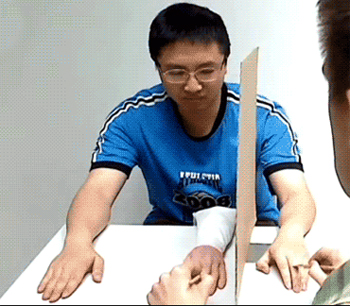Thursday, 28 May 2020
Dancing (like playing music) alters your brain if you do it a lot

The various brain-imaging techniques that have been available for some decades now have made it possible to observe the structural anatomical changes that occur in the brains of people who engage regularly in a given a activity, such as dancing or playing music. Today I want to talk about research on these changes that has been conducted recently by Falisha Karpati of McGill University in Montreal. In her 2017 study entitled “Dance and music share gray matter structural correlates”, she compared the brains of professional dancers with those of professional musicians, on which more research had previously been done. In her 2018 study, “Structural Covariance Analysis Reveals Differences Between Dancers and Untrained Controls”, she compared the brains of professional dancers with those of control subjects who had no dance training. In these two studies, Karpati found that dancing or playing music for eight hours every day does indeed make one’s brain different from those of people who do neither. (more…)
Uncategorized | Comments Closed
Tuesday, 19 May 2020
Neural correlates of mathematical beauty

This week I’d like to tell you about a study published in 2014, entitled “The experience of mathematical beauty and its neural correlates”.
We know that mathematicians have long talked about experiencing genuine aesthetic pleasure at the sight of certain mathematical formulas. We also know from several brain-imaging studies that activation of field A1 of the medial orbito-frontal cortex (mOFC) is one of the most common neuronal correlates of the more conventional, sense-based experience of beauty (for example, in someone’s face, or in a landscape, or in a piece of music). Hence the authors of this study (neuroscientist Semir Zeki and his colleagues) decided to investigate whether the aesthetic pleasure that mathematicians derive from such a seemingly abstract source as a mathematical formula activates this same area in their brains. And the answer seems to be yes. … (more…)
Pleasure and Pain | No comments
Tuesday, 21 April 2020
The rubber-hand illusion

The sense that you have a body and can distinguish what’s part of it from what’s not is with you all the time. It’s so familiar that it’s hard to imagine not having it. Yet several experiments, such as the rubber-hand-illusion experiment described in this post, show that this sense is actually a complex construct that your brain assembles from the myriad pieces of sensory information that it receives constantly. (more…)
The Emergence of Consciousness | No comments
Wednesday, 8 April 2020
Spectacular advances in two-photon microscopy and two-photon calcium imaging

What if I told you that scientists had just succeeded in recording the simultaneous activity of 12 000 neurons in the cortex of a mouse as it moved freely around its cage, and that they had done so at the cellular level, down to a frequency of 17 Hertz? Would you say something like, “So what?” or “Who cares?” or “Why don’t you tell me in language I can understand?” In this post, I’m going to try to meet that last challenge. (more…)
From the Simple to the Complex | No comments
Tuesday, 17 March 2020
A Chair Doesn’t Have To Be Electric To Be Dangerous

Moving is good for your brain. We all know this instinctively, because of the way we just feel better after walking, dancing, playing soccer or engaging in other physical activity. But too often, we forget, because we have too much work to do, too many e-mails to answer, too many TV series to stream and so on. As a result, all too many of us end up spend all too many hours sitting every day. Scientists who study this issue use the term “sedentariness” to describe this pattern in which people remain seated and expend very little energy for long periods. And the scientists’ studies have shown that there is a meaningful distinction between how sedentary someone is and how much physical activity they engage in every day or week preventing injuries at the office and premises liability claims. (more…)
Body Movement and the Brain | No comments







